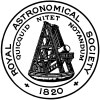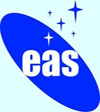Asteroseismology in the era of the CoRoT and Kepler missions
Principal contact: D. W. Kurtz (DWKurtz@uclan.ac.uk)
Organisers: C. Aerts (Leuven, Belgium), D. Kurtz (UCLan, UK)
Asteroseismology is an active field, especially within European astronomy. Hundreds of asteroseismologists across Europe are joining forces in various networks and consortia connected with ground-based observing campaigns and satellite missions. By the time of the NAM/JENAM meeting in April 2009 the first CoRoT results will be public, and the Kepler mission will be launched.
There is a special relationship between asteroseismology and planet-finding. Asteroseismology determines fundamental parameters for stars, such as mass and radius, which are critical for assessing transiting planet radii and masses. It also provides the age of the planetary system with a precision that cannot be achieved by other means. High precision results from CoRoT and those to come from Kepler will revolutionize asteroseismology. Data sets on thousands of stars with 5-month virtually uninterrupted light curves at micromagnitude precision have recently been released from CoRoT. The Kepler mission will observe 170,000 stars with 1-10 micromag precision for time spans as long as the mission itself - at least 4 years. Except for some specialist niches, future theoretical discussions and advances in stellar physics from variability will come from the data sets of these space missions.
Scientific Programme
| Thursday 23rd April | ||
| 11:00 | Effects of Rotation on Stellar Pulsation Frequencies | Kara Burke |
| 11:20 | Diagnostics of the Structure of the CoRoT Solar- Like Stars HD49933 and HD 181420 | Ian Roxburgh |
| 11:35 | Fitting the p-modes of Sun-Like CoRoT Stars | Graham Verner |
| 11:55 | Narrow Windowed Autocorrelation as a Diagnostic of Solar-Type Oscillators | Ian Roxburgh |
| 12:10 | New Oscillation Frequencies for 11 Beta Cephei Stars | Kym Goss |










